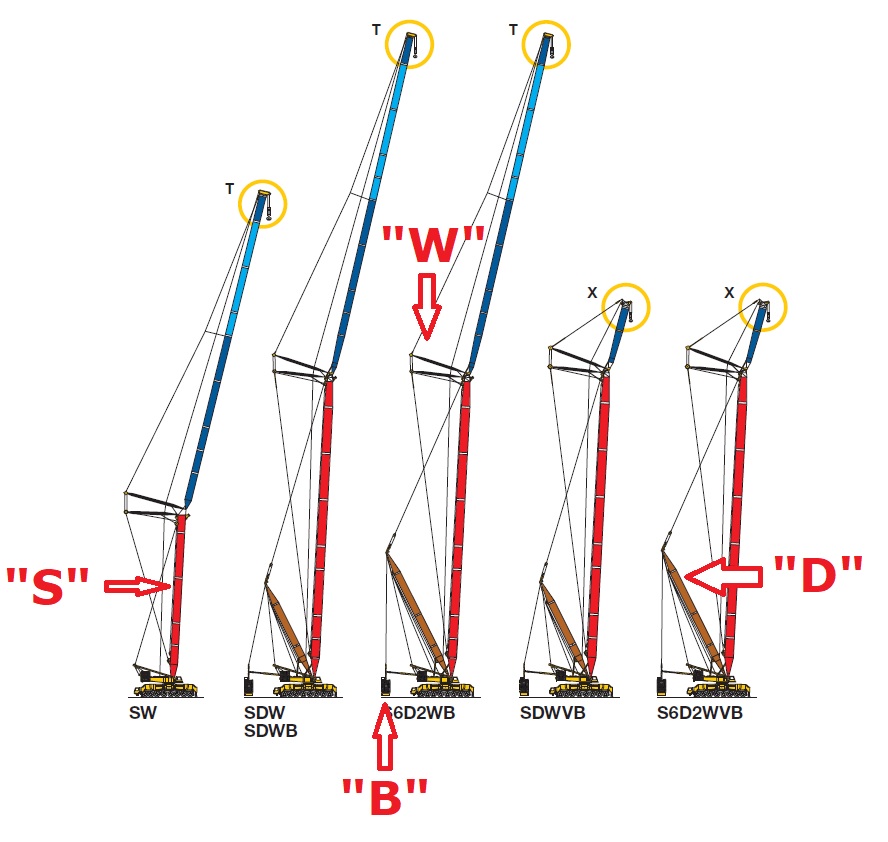Have you ever wondered what is the logic behind the crane configuration codes used by Liebherr?
How could an unintelligible code such as “SL13DFB” being interpreted?
There is a logic behind the letters used – it has to be found in the German roots of the company.
The letters most frequently used in wind farm construction to define crane configurations are:
SL (“Schwer / Leicht”): This code means that the main boom of the crane is made of two different types of sections, “Heavy” (with a standard area) and “Light” (with a somewhat smaller area, used in the last segment of the boom). Between the “heavy” and the “light” sections s transition element is used
D (“Derrick”): The crane has a secondary boom, called “Derrick”.
F (“Feste Gitterspitze”): The crane use a jib (an auxiliary element assembled on the top of the main boom).
W (“Wippare Gitterspitze”): This is a different type of jib (a luffing fly jib). “WV” is the heavy version.
HS (“Hilfspitze”): This is one more jib configuration specifically designed for wind turbine assembly.
B (“Ballast”): The crane use a suspended counterweights system.

Leave a Reply